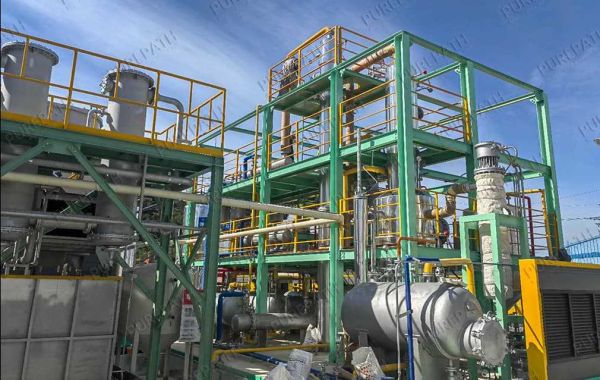Let’s compare the economics of small-scale versus large-scale waste oil recycling facilities.
Small-Scale Waste Oil Recycling
Small-scale facilities typically process between 1,000 to 10,000 gallons of waste oil per month. These operations are often locally owned and serve regional markets.
Advantages:
Lower Initial Investment: Small-scale plants require less capital for equipment and infrastructure.
Local Supply Chains: They can efficiently collect waste oil from nearby auto shops, factories, and farms, reducing transportation costs.
Flexibility: These facilities can adapt to local demand fluctuations and niche markets (e.g., producing recycled oil for small industrial users).
Disadvantages:
Higher Per-Unit Costs: Due to lower processing volumes, economies of scale are limited, making production costs per gallon higher.
Limited Technology: Small operations may lack advanced refining capabilities, reducing the quality and value of the end product.
Regulatory Challenges: Compliance with environmental regulations can be costly for small players, sometimes making operations unfeasible.
Large-Scale Waste Oil Recycling
Large-scale facilities process hundreds of thousands of gallons per month, often serving national or international markets.
Advantages:
Economies of Scale: Bulk processing reduces per-unit costs, improving profitability.
Advanced Technology: These plants can afford high-tech refining methods, producing higher-grade base oils and fuels.
Stronger Market Position: Large recyclers can negotiate better prices for raw materials and finished products.
Disadvantages:
High Capital Operational Costs: Setting up and maintaining a large facility requires significant investment.
Dependence on Consistent Supply: These plants need a steady, high-volume waste oil supply, which may require long-distance transportation, increasing costs.
Environmental Regulatory Risks: Large operations face stricter scrutiny, and any compliance failure can lead to hefty fines.
Which is More Economically Viable?
Small-scale recycling works best in regions with fragmented waste oil sources and lower demand.
Large-scale operations thrive where high volumes of waste oil are available, and markets for refined products are strong.
Ultimately, the choice depends on local conditions, investment capacity, and market demand. Both scales play essential roles in creating a sustainable waste oil recycling ecosystem.







